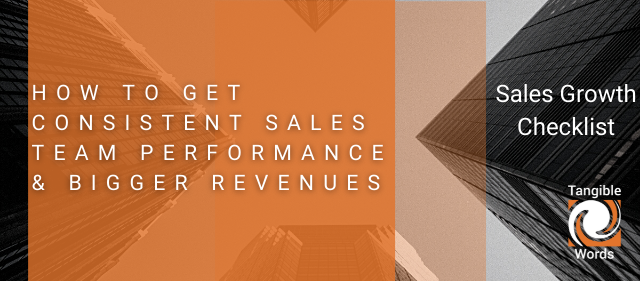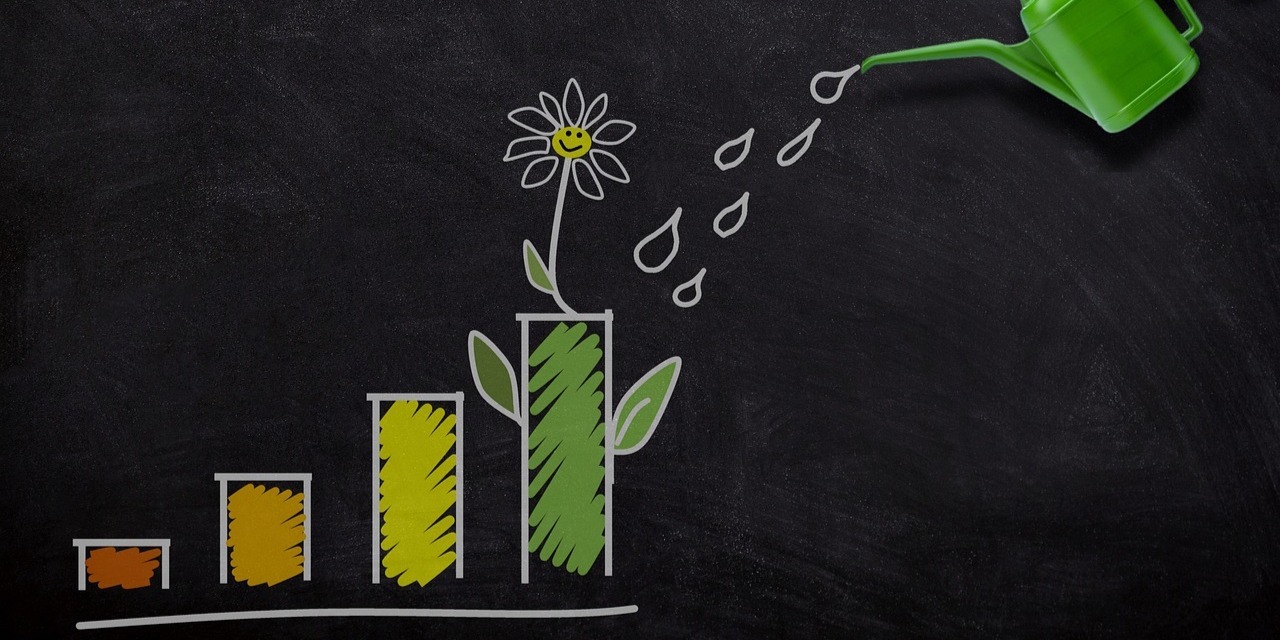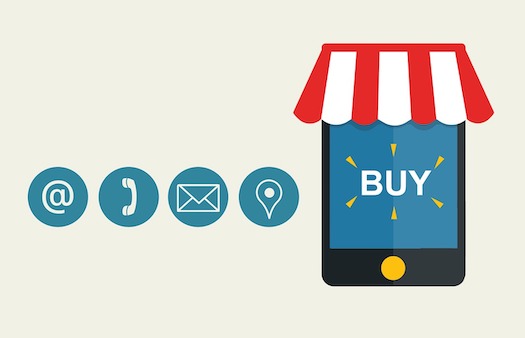SHARE
Does Your B2B Sales Team Have A Set, Repeatable Sales Process?

“Sales” may seem like a dirty word to some, but for businesses, “sales” means survival and your B2B sales team is your greatest weapon.
After all, making money is the only way they can stay afloat! There’s a feel good story in sales you might not have realized: your local economy needs businesses just as much as a B2B sales team needs other businesses. Look no further than all the jobs your friends, family and neighbours have in your community - you wouldn’t want them to lose their job or have to move away.
And if you’re still feeling gritty about sales, consider this: sales is really just about helping people solve problems - there’s not a lot to hate there.
However, how you go about your sales process can tarnish whether or not the way you sell is really about helping other people - or just helping yourself. If you simply aren’t being helpful, you won’t get the chance to solve your prospect’s problems.
For example, the salesperson desperate for more customers, who also mistakenly believes that everyone is a good fit for the product (“and won’t you just listen for 15 minutes?!”) is not helping anyone, especially not himself. And that’s why he won’t convert leads to sales.
But no matter how dry your pipeline is now, here’s how you will help others best, and grow your sales funnel at the same time.
TIP #1: The Mindset To Sell More, More Meaningfully
The first thing I want you to double check is: does your B2B sales team have a list of objections and frequently asked questions that they intentionally bring out as part of their sales process?
Bringing up objections and key question is one of the best ways to make a human to human connection - after all, you’re not trying to pull the wool over their eyes with selling. If you were in their shoes, you’d have these questions, and being prepared and able to answer these shows you identify with the buyer and won’t gloss over any details for the sake of “selling more” or “meeting quotas”.
So make sure your sales team is ready to predict and answer a prospect’s questions. They will have questions, ranging from “Can it do X?” to “What makes your service special?” That’s the whole point of sales: to help people find the things they want by answering questions. Don’t get dazzled by whether you’re selling B2B or B2C: at the end of the day there is a human making a decision. Yes, in the B2B world, you’re navigating and dealing with a hierarchy of roles, departments, budget lines and fiscal years—something that seems so intangible and impersonal. But we need to concentrate on the fundamental: the human in front of us. And be a human first.
Don’t get dazzled by whether you’re selling B2B or B2C: at the end of the day there is a human making a decision. Yes, in the B2B world, you’re navigating and dealing with a hierarchy of roles, departments, budget lines and fiscal years—something that seems so intangible and impersonal. But we need to concentrate on the fundamental: the human in front of us. And be a human first.
I just finished a Hubspot Bootcamp with David Weinhaus, one of the all time sales greats, and a kind, salt-of-the-earth professional, who happens to be one of Hubspot’s best sales trainers. (Not the typical salesman archetype, right? But guess what, this is what sales really looks like in 2018. Salespeople have to be caring people.)
TIP #2: Be Naturally Curious
If you take a tone of curiosity about the person you’re talking to, you avoid sounding like that salesperson archetype we all dislike. Make a sincere effort to understand the problems of a person/organization. Don’t focus on qualifying them - you might not be the right person to help them, but hopefully you can make them feel listened to and help them get further on their journey than they were before they had this short initial conversation with you.
So do be NATURALLY CURIOUS. You’re not selling, you’re helping.
TIP #3: Recognize That 3 Sales Always Need to Happen
We were also taught in David’s bootcamp that for every sale, three sales actually need to happen.
-
The first sale - the sale toward making a change. If someone isn’t ready to make a change, don’t bombard them with information they haven’t asked for.
-
The second sale - agree on the solution. Your solution may not be right for everyone, but it’s your job within the sales process to figure out who it does fit.
-
The third sale - Agreement on the best provider of the best solution.
Don’t skip a step. Go through a structured sales process so your relationships with customers can be built on strong, sincere foundations.
TIP #4: If You’re Not Offering Inbound, You’ll Quickly Slide Out
Because people are searching online, and 57% of their buyer’s journey is OVER before they even speak to a salesperson, Inbound marketing is ultimately what every sales team needs.
If you’re a helpful salesperson, you have the infrastructure on your website, your emails and your social media to allow customers to find the information they need. That means you create content for the right customers and have answers (via content) available to them at any time of day; where they search, where they hang-out—their favourite social media platforms. Inbound marketing draws customers to you. It’s not a hard sell. Instead your content prioritizes their needs and lets them self-serve that itch they have to scratch, in the way that they like to buy.
You’ll notice when you work through your inbound marketing checklist that every tactic is geared to attract, not push customers to you.
TIP #5: Convert Leads to Sales Using The Inbound Methodology
It’s critical to have a structured system and the inbound sales model is a model that fits any business—not just inbound marketers.
As a sales person, you should understand that Inbound Marketing has three pillars:
-
Increase traffic
-
Convert qualified leads
-
Nurture leads through to customers
And you need content for each stage of the funnel - because remember, this is stuff the prospect is looking for, and you’re trying to be helpful by getting it all ready for them before they need it. When you have documented answers to questions a prospect has, they feel “helped”, and their confidence in your grows, because, gee, you really do understand them, and that feels good!
PS. As a buyer: if you get content you don’t like, you should also give constructive feedback so sales and marketing teams can improve.
TIP #6: Create a Repeatable Sales Process
Now that you understand all of these elements that go into selling well, it’s time to put it together into a repeatable sales process your sales team uses every time. This consistency, and this mapping of the steps in a process are critical: it means information won’t get missed with a particular customer and it also means your sales team can put their resources into working with their best-fit customers through the buyer’s journey.
As a Hubspot Partner, we’ve adopted Hubspot’s Inbound Methodology, but we’ve discovered the world would be a better place if every company adopted this process for their sales team. Certainly any company that has something to sell which costs more than $10K, where the buying process requires solid consideration from multiple members in a group.
Here are the 4 steps to selling something that requires a considered buying process, and how you can use them.
1. Connect! This is not a sales qualification call, it’s a human to human connection where two people meet and find out if they have more to talk about together - and determine the priority of their continued conversation.
-
Both the buyer and the seller have to assess each other on this regard.
-
They have to feel like they are speaking the same language and communicate well. Some people call this stage about “building rapport” but I don’t want you to feel like it’s cheesey or faked - or something that has to happen.
-
If the rapport doesn’t built naturally, you should both move on. Forcing it because you think “you should build rapport” makes you come across as something that you’re not, and that cheats and defeats the whole purpose of this stage for both of you.
2. The 2nd step is to Explore— get to the guts of what your prospective customers are struggling with, by being naturally curious about their challenges, goals, timing and gaps they’re facing. If you uncover that you can’t really help solve those issues, help the customer out by introducing them to someone who can.
3. If you’re still on the same level together, you’ll go onto Step #3 of a “considered” purchase. We call this an Activity plan—make a list of what solutions you offer that would help solve the problems identified in the Explore stage. If everyone agrees (and only if) that these “activities” are the right ones, you move onto
4. the Proposal stage together. Your prospect had an idea from your Explore call about what kind of solutions you sell and what they normally cost. But you’re pulling that together as well as all the questions they asked along the way in your proposal. Having a meeting to discuss the Proposal is critical, because there should be questions from both sides that still need answers, from as granular as, “is this also included” to as back-the-truck-up-ish as, “do we really need to spend this much?” Questions are normal good and OK - in fact, they’re the whole point.
You need a set sales process to be able to serve your customers better so you give the same experience every time - one of helping people, not rushing to chase the money - which never ends well anyway!
This Checklist Guides A Better Sales Process & Helps Your B2B Sales Team Convert Leads
Topics
- Content Creation (297)
- Growth-Driven Design Websites (167)
- Inbound Marketing (144)
- Sales Growth (133)
- Tangible Words (111)
- Search Engine Optimization (85)
- Social Media Marketing (83)
- Blogging for Business (75)
- Hubspot (75)
- Economic Development (64)
- Events & Training (60)
- Company Growth Podcast (49)
- Manufacturing (47)
- Tourism (46)
- Email Marketing (42)
- Case Stories (40)
- Testimonials & Client Feedback (36)
- Education and SaaS (23)
- Google (21)
- Careers (19)
- Inbound Marketing Agency (19)
- Cool Companies (18)
- FAQ (16)
- Alysha Dominico (13)
- Associations (7)
- Food and Beverage (7)
TW Blog Sign-Up
Learn more about how to grow your business and improve your sales team process.








